This article was medically reviewed by Luba Lee, FNP-BC, MS and by wikiHow staff writer, Hunter Rising. Luba Lee, FNP-BC is a Board-Certified Family Nurse Practitioner (FNP) and educator in Tennessee with over a decade of clinical experience. Luba has certifications in Pediatric Advanced Life Support (PALS), Emergency Medicine, Advanced Cardiac Life Support (ACLS), Team Building, and Critical Care Nursing. She received her Master of Science in Nursing (MSN) from the University of Tennessee in 2006.
There are 24 references cited in this article, which can be found at the bottom of the page.
This article has been viewed 39,451 times.
Scabies is an irritating skin condition caused by mites that can lead to itchiness and rashes. In a severe case, scars may form from the rash or from scratching too hard. While you can never completely remove a scar, there are many things you can do at home to make them less noticeable. If your scars aren’t responding to home treatment, look into surgical options to see if they’ll work for the condition. However, the best way to prevent scarring is by taking proper care of the scabies wounds so scar tissue doesn’t form.
Steps
Using At-Home Remedies
-
1Massage the scar to help it break down. Wait until the wound heals completely before you start massaging the scar. Press down on the scar tissue with your fingers as hard as you can without causing any pain. Rub the scar in circular motions for a few minutes at a time to reduce the size of the tissue. You can massage your scars as many times throughout the day as you want.[1]
- Fresh scar tissue may still feel tender, so don’t apply too much pressure during your massage.
- Apply a fingertip-sized amount of petroleum jelly before you start massaging the scar so it’s easier to massage.
-
2Take a lukewarm bath with baking soda or oatmeal to relieve itching. Fill your tub with tepid water and pour in 2 ounces (57 g) of baking soda. Otherwise, you can mix in 1 cup (90 g) of ground oatmeal for similar effects. Soak in the tub for at least 10 minutes so you don’t feel as itchy and to reduce redness or swelling.[2]Advertisement
-
3Use topical onion extract to soften hardened scar tissue. Look for a topical cream or ointment that contains onion extract at your local drugstore. Put a fingertip-sized amount of ointment on the scar tissue and massage it into your skin until it’s clear.[3] Apply the extract on your scars up to 3 times per day for 2–3 months.[4]
- Onion extract contains natural enzymes that break down scar tissue to make it appear smoother.
-
4Cover the scars with a silicone gel sheet to keep them hydrated. As soon as your scabies wounds close up and heal, find silicone sheets that are large enough to cover most of your scars. Peel the adhesive backing off of the sheet and press it firmly against your skin. Leave the silicone sheet on throughout the day and take it off before you bathe. Use a new silicone sheet every day for 6–12 months so the scars aren’t as noticeable.[5]
- You can buy silicone gel sheets from your local pharmacy. You may also use silicone ointment if you can’t find sheets.
- Silicone sheets may cause a rash or dermatitis when you wear them every day. If you have any side effects, contact a dermatologist or doctor to see what other treatments they recommend.
- Silicone sheets keep your skin moist so it doesn’t dry out and form scabs or scar tissue.
-
5Wear a pressure dressing to get rid of raised scars. Wrap a compression sleeve or an elastic bandage tightly around the scar during the day to apply pressure onto the tissue. Only take the dressing off when you bathe so it doesn’t get wet. Continue wearing the pressure dressing every day for up to a year for the most effective treatment.[6]
- Ask a dermatologist or doctor to see how long they recommend wearing the dressing for your scars.
- Replace the pressure dressing every 6–8 weeks since the old one may start to lose effectiveness.
-
6Try using a vitamin E ointment to make the scar less noticeable. Use a fingertip-sized amount of vitamin E ointment and rub it onto your scars. Massage the ointment into your skin until it absorbs completely. Use the vitamin E once or twice a day to treat your scars until they begin to fade.[7]
- You can buy vitamin E ointments from your local drugstore.
- You may also try using coconut or almond oil instead.
- Vitamin E can make your skin more sensitive to sunlight and may cause irritation.[8]
Warning: Use vitamin E with caution since it can actually cause skin irritation and possibly make your condition worse. Stop using vitamin E if you experience any side effects and consult with a dermatologist.[9]
-
7Apply sunscreen when you go outside so your scars don’t darken. Scar tissue can easily discolor faster than normal skin, so protect yourself from the sun. Get a sunscreen that has at least 30 SPF and apply it to your skin. Rub the sunscreen in until it’s clear and absorbs into the scar tissue. Reapply sunscreen every 2 hours to ensure you stay protected.[10]
- Avoid putting sunscreen on scabies wounds if they haven’t fully healed since it could cause irritation or infection.
Seeking Medical Treatment
-
1Have light treatment to remove raised scarring and discoloration. Schedule a consultation with a doctor or dermatologist to see if light therapy will work. If you have light therapy, your doctor will use lasers or bright pulses of light to remove the top layers of skin to make them flatter. It can also make your scars look less red so they blend in easier with your skin tone.[11]
- Light treatments do not completely get rid of a scar, but it may make them less visible.[12]
- Depending on the severity of your scars, you may need multiple light treatments.
-
2Ask about corticosteroid or bleomycin injections if you have raised scars. Corticosteroids and bleomycin have enzymes that naturally reduce itching and shrink raised scars. Make an appointment with a dermatologist and ask them about getting an injection. If they think it will be effective for the scarring, they’ll inject the chemical directly into the scar tissue to help break it down. You may need multiple injections to make your scar level with the rest of your skin.[13]
- You may experience temporary redness or swelling around the injection site.
- Sometimes, your dermatologist may pair injections with light therapy to make the scar even less noticeable.
-
3See if your doctor recommends a chemical peel to lighten your scars. Chemical peels remove the top layers of your skin to help shrink scars and make them blend in more. Ask a doctor about your scabies scars to see if they think a chemical peel will effectively treat them. If they think a peel will work for your condition, the doctor will brush a chemical solution onto your skin to lighten it. After a few minutes, they will wipe off the solution so your skin can heal.[14]
- Chemical peels can cause redness, stinging, and swelling that can last up to 2 weeks.
Warning: Your skin will be extremely sensitive to the sun after getting a chemical peel, so be sure to cover your skin or apply sunscreen to prevent any damage.
-
4Try cryosurgery to shrink your scarring. Cryosurgery involves freezing the scar tissue to reduce its size and lighten its color.[15] Schedule an appointment with a doctor so they can look at your scars and see if cryosurgery is right for you. The doctor will inject a freezing compound, such as liquid nitrogen, into the scar. After a few weeks, the scar tissue will shrink and die.[16]
- You may also have other corticosteroid injections to help reduce your scar tissue even more.
- You will usually be given painkillers and topical dressings after cryosurgery to help ease any discomfort you have.
-
5Consider getting surgery to remove scar tissue if no other treatments work. If you’ve tried other treatments without any success, ask your doctor to see if they can surgically remove the scar tissue. If they think it’s a viable option, they will schedule a surgery to excise any raised scarring so it’s level with the rest of your skin.[17]
- Scars can sometimes return even if you have them removed.
Treating Scabies to Prevent Scarring
-
1Schedule a doctor’s visit as soon as you have symptoms to get a prescription. Scabies is very contagious and can only be treated with prescription medication. Schedule an appointment with a doctor so they can confirm the diagnosis and prescribe you a prescription ointment that kills the mites.[18]
- You may also be prescribed an oral antibiotic to help with your condition.
- If you leave scabies untreated, it can make your scarring worse or lead to more severe skin conditions.
Tip: Get prescriptions for every member of your household since scabies can easily spread between them.
-
2Apply the prescription to your body before you go to bed. Wash your body before you apply the ointment so your skin is clean. Rub the ointment on your entire body from your neck down even if you only have scabies on a small patch of skin. Rub the ointment into your body until it’s clear before going to sleep. Leave the ointment on for at least 10–12 hours so it can absorb into your body and kill the mites.[19]
- You should only have to apply the ointment once, but it may take up to a month for your symptoms to completely disappear. If you still have symptoms after 4 weeks, you may need another treatment.
-
3Avoid scratching your skin. While it can be very tempting to scratch your skin, it may lead to further infection and cause more scarring. Do your best to resist scratching any wounds or rashes caused by scabies. If you need to, take an antihistamine or apply calamine lotion on the area to reduce the itchiness so you aren’t as tempted.[20]
- Talk to your doctor if you have persistent itching since they may be able to prescribe you something that can ease the pain.
-
4Clean the scabies wounds daily with mild soap. Rinse the wounds under warm water and lather a mild liquid soap on your skin. Massage the entire area lightly before rinsing the soap off with more warm water. Pat your skin dry with a towel when you’re finished.[21]
- Washing the wounds ensures there aren’t any bacteria that could cause infections.
-
5Cover the wound with petroleum jelly to keep it moist. Use a fingertip-sized amount of petroleum jelly and rub it onto your skin. Spread the jelly into a thin layer so it covers all of your wounds. Continue rubbing the jelly into your skin until it’s completely absorbed.[22]
- If your skin dries out, it’s more likely to form a scab and turn into a scar.
-
6Put a new bandage over the wounds every day to protect them. Pick a bandage that’s large enough to cover all of the wounds and press it onto your skin. If an adhesive bandage doesn’t stick well, wrap the wounds in gauze and secure it in place with paper tape. Leave the bandage on throughout the day so your skin stays moist. Change your wound dressing every day until your scabies heal completely.[23]
Warnings
- Avoid frequently exfoliating your skin since you could re-injure the area and make your scars appear worse.⧼thumbs_response⧽
- Consult with a doctor or dermatologist before using any natural treatments to make sure they don’t cause any negative interactions.[24]⧼thumbs_response⧽
- If you suspect you have scabies, see a doctor or dermatologist right away since there aren’t any proven over-the-counter treatments.[25]⧼thumbs_response⧽
- Avoid physical contact with people that have scabies or any clothing and bedding they’ve used.[26]⧼thumbs_response⧽
References
- ↑ https://medicine.yale.edu/dermatology/dermsurg/Chapter%2018%20Time%20and%20Care%20Heals%20All%20Wounds_36907_284_5_v1.pdf
- ↑ https://apps.ohsu.edu/health/md-4kids/new/topic-301.html
- ↑ https://www.ncbi.nlm.nih.gov/pmc/articles/PMC3390235/
- ↑ https://www.drugs.com/npp/onion.html
- ↑ https://www.ncbi.nlm.nih.gov/pmc/articles/PMC4486716/
- ↑ https://my.clevelandclinic.org/health/diseases/21466-hypertrophic-scar
- ↑ https://www.nhs.uk/conditions/scars/treatment/
- ↑ https://lpi.oregonstate.edu/mic/health-disease/skin-health/vitamin-E
- ↑ https://www.ncbi.nlm.nih.gov/pubmed/10417589
- ↑ https://www.med.umich.edu/1libr/Surgery/PlasticSurgery/ScarSunScreen-postop.pdf
- ↑ https://www.nhs.uk/conditions/scars/treatment/
- ↑ https://www.asds.net/skin-experts/skin-treatments/laser-light-therapy/laser-therapy-for-scars
- ↑ https://nyulangone.org/conditions/scars-keloids/treatments/medical-treatment-for-scars-keloids
- ↑ https://www.asds.net/skin-experts/skin-treatments/chemical-peels/chemical-peels-for-scars
- ↑ https://www.nhs.uk/conditions/scars/treatment/
- ↑ https://www.ncbi.nlm.nih.gov/pmc/articles/PMC5965337/
- ↑ https://nyulangone.org/conditions/scars-keloids/treatments/surgery-for-scars-keloids
- ↑ https://www.aad.org/public/diseases/a-z/scabies-self-care
- ↑ https://www.aad.org/public/diseases/a-z/scabies-treatment
- ↑ https://www.drugs.com/cg/scabies-aftercare-instructions.html
- ↑ https://www.hopkinsmedicine.org/health/wellness-and-prevention/everyday-cuts-and-scrapes-how-to-prevent-scarring
- ↑ https://health.clevelandclinic.org/how-to-prevent-scarring/
- ↑ https://www.ucihealth.org/blog/2018/10/wound-care
- ↑ https://www.aad.org/public/diseases/a-z/scars-treatment
- ↑ https://www.aad.org/public/diseases/a-z/scabies-treatment
- ↑ https://www.cdc.gov/parasites/scabies/resources/scabies_fact_sheet.pdf


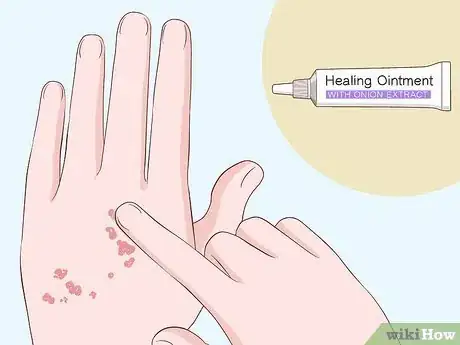
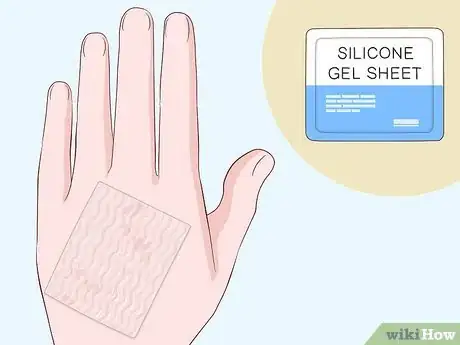

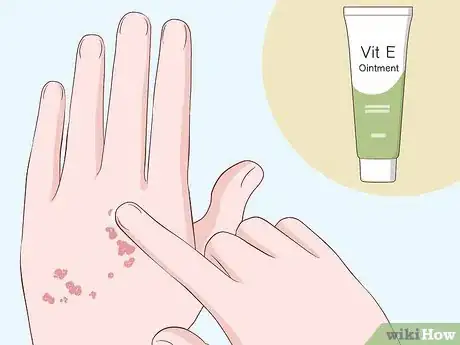

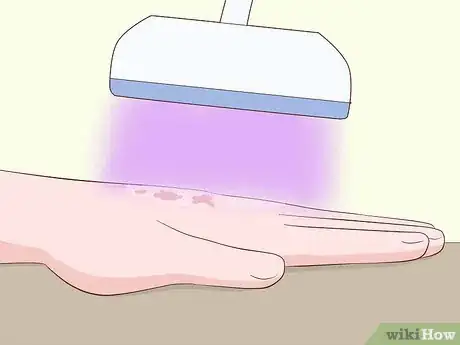

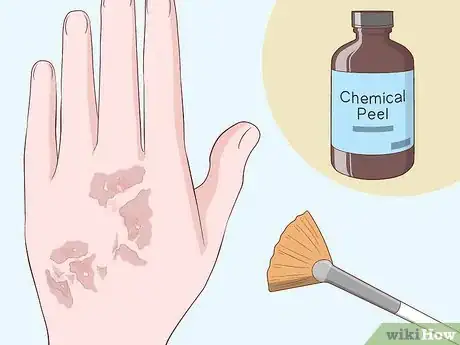

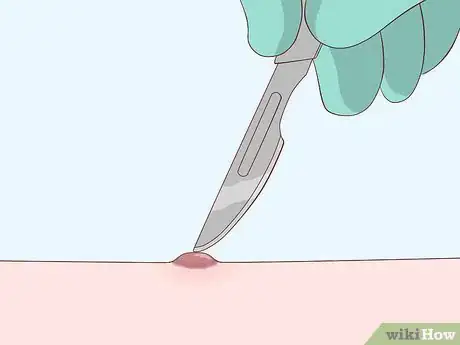
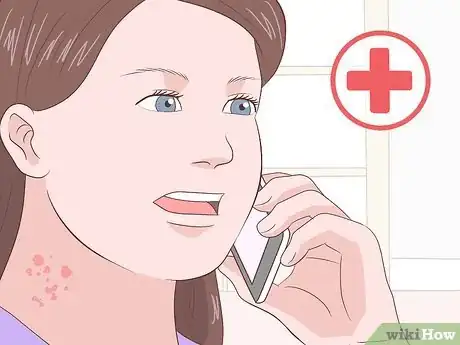
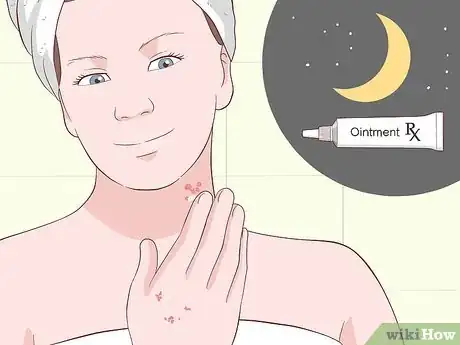




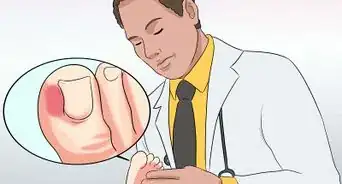






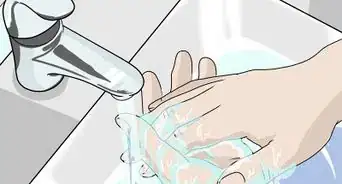



















































Medical Disclaimer
The content of this article is not intended to be a substitute for professional medical advice, examination, diagnosis, or treatment. You should always contact your doctor or other qualified healthcare professional before starting, changing, or stopping any kind of health treatment.
Read More...